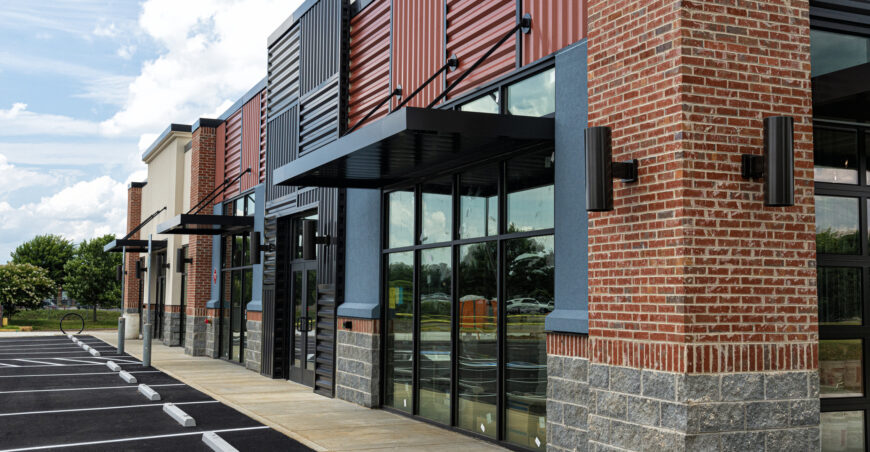Retail real estate in 2025 is shaping up to be one of the most competitive landscapes in years. With record-low vacancy rates, shifting consumer behaviors, and the continued evolution of omnichannel retail, landlords and investors must adapt to maximize returns and capitalize on emerging opportunities. As we navigate this dynamic environment, understanding the key drivers behind these trends and how to leverage them will be crucial for retailers, landlords, and investors alike.
The Low Vacancy Challenge: What’s Driving It?
The retail real estate sector has undergone a dramatic transformation in recent years. The past few years initially forced widespread store closures, accelerating e-commerce adoption and creating uncertainty for brick-and-mortar spaces. However, 2023 and 2024 saw a strong rebound in retail leasing, leading to an unexpected challenge in 2025: historically low vacancy rates.
Several factors have contributed to this trend:
1. Limited New Retail Construction
New retail development has lagged demand, with developers focusing more on repurposing existing spaces rather than building new ones. Rising construction costs, higher interest rates, and zoning restrictions have made ground-up development less appealing, reducing the overall supply of retail space.
2. Retail Resilience and Expansion
Contrary to earlier predictions of a retail apocalypse, physical retail has proven its staying power. Major brands are expanding their brick-and-mortar footprints, leveraging physical stores for brand engagement, fulfillment hubs, and omnichannel strategies. Categories such as discount retail, fitness, experiential entertainment, and fast-casual dining have all seen significant growth, contributing to higher occupancy rates.
3. Adaptive Reuse and Mixed-Use Development
Rather than creating new shopping centers, many developers and investors are repurposing existing properties. Former department stores and big-box locations are being converted into mixed-use developments, medical offices, fulfillment centers, and entertainment venues, further reducing available retail space.
4. Evolving Consumer Behavior
Shoppers are returning to stores in large numbers, driven by a preference for in-person experiences, immediate product access, and the social aspects of shopping. This trend has encouraged brands to prioritize their physical retail presence, leading to increased competition for prime locations.
Emerging Opportunities in Retail Real Estate
While low vacancy rates create challenges, they also present lucrative opportunities for those who can navigate the evolving market strategically.
1. Investing in Secondary Markets
With primary markets like New York, Los Angeles, and Miami experiencing high rents and fierce competition, retailers and investors are turning their attention to secondary and tertiary markets. Cities like Phoenix, Nashville, and Charlotte are seeing increased retail demand due to population growth and shifting consumer spending patterns.
2. Repurposing Underutilized Spaces
Adaptive reuse projects continue to gain traction. Investors are finding success in transforming struggling malls into mixed-use developments that incorporate retail, medical offices, residential units, and entertainment venues. Similarly, vacant big-box stores are being repurposed into last-mile fulfillment centers to support e-commerce logistics.
3. Leveraging Data-Driven Site Selection
Retailers are increasingly using AI-driven analytics to identify optimal locations for expansion. Advanced data tools analyze foot traffic, local demographics, and competitor proximity to determine where new stores should open. This data-driven approach minimizes risk and maximizes potential revenue.
4. Experiential Retail and New Tenant Categories
Experiential retail remains a key driver of brick-and-mortar success. Retailers and landlords are embracing concepts that focus on unique in-store experiences, such as immersive showrooms, interactive pop-ups, and hybrid retail-entertainment spaces. Categories like fitness studios, wellness centers, and entertainment venues are filling vacancies once occupied by traditional retail stores.
5. Flexible Leasing Structures
Given the demand for retail space, landlords are adopting flexible leasing strategies to attract high-quality tenants. Shorter lease terms, percentage rent agreements, and co-tenancy clauses allow both landlords and tenants to navigate market fluctuations more effectively.
Strategies for Landlords and Investors in 2025
With retail real estate becoming more competitive, landlords and investors must be proactive in positioning their assets for long-term success.
1. Prioritize Tenant Mix and Experience
A well-curated tenant mix enhances foot traffic and sales for all businesses within a retail center. Landlords should focus on blending national brands with unique local retailers, entertainment, and service-oriented tenants to create a vibrant shopping environment.
2. Invest in Property Enhancements
Retail properties that offer modern amenities, strong branding, and inviting public spaces tend to attract higher-quality tenants. Upgrading signage, landscaping, lighting, and digital wayfinding can enhance the shopping experience and boost leasing appeal.
3. Embrace Omnichannel Retailing
Physical stores are no longer just points of sale – they function as fulfillment centers, return hubs, and brand experience locations. Retail landlords should accommodate tenants’ omnichannel strategies by offering features like curbside pickup zones, dedicated BOPIS (Buy Online, Pick Up In-Store) spaces, and seamless integration with online operations.
4. Strengthen Landlord-Tenant Relationships
Retail success in 2025 will depend on collaboration between landlords and tenants. Offering tenant improvement allowances, marketing support, and flexible lease terms can help retailers thrive, ultimately benefiting property owners through long-term occupancy stability.
5. Stay Ahead of Market Trends
Retail real estate is evolving rapidly, and landlords must stay ahead of industry trends to remain competitive. Attending industry conferences, leveraging commercial real estate technology, and maintaining strong broker relationships can provide insights into upcoming opportunities and risks.
Navigating the complexities of retail real estate in 2025 requires a deep understanding of market trends, strategic site selection, and adaptive investment approaches. At ICRE Investment Team, we specialize in helping investors, landlords, and retailers capitalize on emerging opportunities in this dynamic landscape.
With record-low vacancy rates and increased competition for prime retail space, having the right advisory team on your side is crucial. Our expertise in site selection, adaptive reuse, tenant representation, and investment strategy allows us to provide data-driven insights and tailored solutions that maximize your returns.
Whether you’re looking to expand your retail footprint, repurpose underutilized properties, or secure high-performing tenants, our team leverages cutting-edge analytics and deep market knowledge to guide you toward profitable, future-proof investments.
Retailers – Find the perfect location to attract foot traffic and drive revenue.
Investors – Identify high-growth opportunities and unlock hidden value in retail assets.
Landlords – Optimize tenant mix, leasing strategies, and asset positioning for long-term success.
Let’s talk about how ICRE Investment Team can help you navigate the retail real estate market in 2025 and beyond. Contact us today to explore opportunities that align with your investment goals.
















